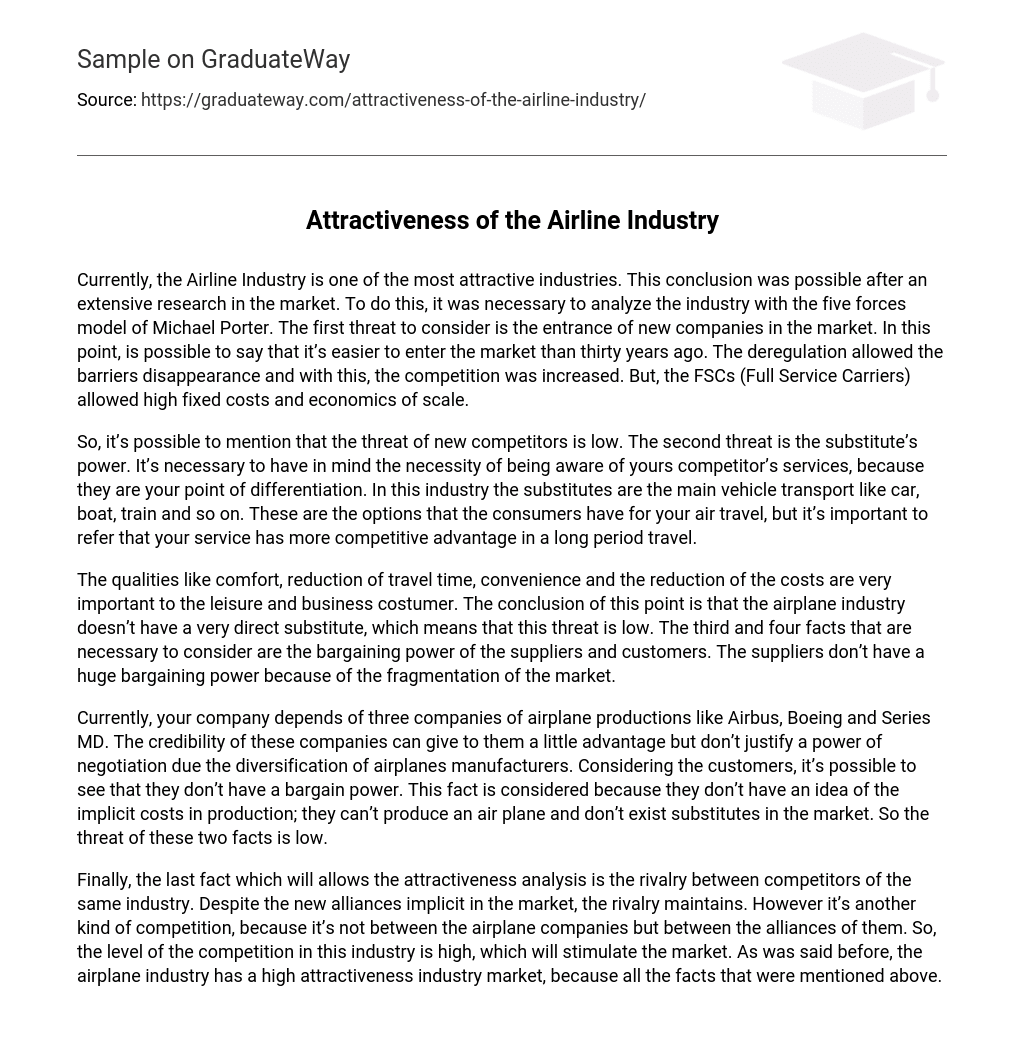Currently, the Airline Industry is considered highly attractive after conducting thorough market research. The industry was analyzed using Michael Porter’s five forces model. The first threat to consider is the entrance of new companies into the market. It is easier to enter the market now compared to thirty years ago due to deregulation, which eliminated barriers and increased competition. However, Full Service Carriers (FSCs) still face high fixed costs and economies of scale.
The risk of new competitors is low, but the power of substitutes should also be taken into account. It is crucial to be knowledgeable about the services provided by your rivals as they set you apart from them. In this sector, substitutes include vehicles like cars, boats, trains, etc., which consumers can opt for when traveling. Nevertheless, it is important to highlight that your air travel service holds a competitive edge specifically for long-distance trips.
The leisure and business customers value qualities such as comfort, reduced travel time, convenience, and cost reduction. Consequently, the airline industry faces a low threat due to the lack of a direct substitute. Additionally, two other crucial factors to consider are the bargaining power of suppliers and customers. Suppliers have limited bargaining power due to the market’s fragmentation.
Currently, your company relies on three airplane production companies: Airbus, Boeing, and Series MD. While the credibility of these companies may provide them with a slight advantage, it does not justify much negotiation power due to the diversification of airplane manufacturers. When considering the customers, it becomes apparent that they have little bargaining power. This is because they are unaware of the hidden costs involved in production and have no ability to produce their own airplane. Furthermore, there are no substitutes available in the market. Therefore, the threat posed by these two factors is low.
Finally, the last factor that enables the analysis of attractiveness is the rivalry between competitors within the same industry. Despite the emergence of new alliances in the market, competition remains strong. However, this competition takes a different form, as it is not between individual airplane companies but rather between their alliances. Therefore, the level of competition in this industry is high, which will drive market stimulation. As previously mentioned, all the aforementioned factors contribute to the high attractiveness of the airplane industry market.





